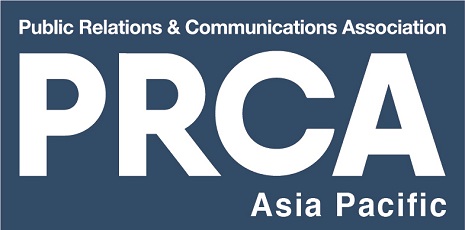The COVID-19 crisis has had a profound impact on public relations professionals across the world. Despite the ongoing uncertainty, communications are playing an essential role connecting stakeholders and helping organisations to make sense of their new environments. Messaging and communication have never been more critical to business.
This exclusive Q&A series spotlights the communications professionals behind the organisations working the COVID-19 crisis.
In this week’s Q+A, Vanessa Ho Nikolovski MPRCA, Managing Director & APAC Chair of Client Services, Weber Shandwick highlights the impact the global pandemic has made on the company and the measures taken to manage disruption.
How has the COVID-19 crisis affected you and your organisation?
The crisis has affected us much the same as it has affected large organizations the world over. However, we have been fortunate in that we were already well-prepared to work from home. To provide work-life flexibility for our employees, we’ve implemented several initiatives around remote working over the years. For example, in our Singapore office, everyone has had the option of working from home one day a week as part of the way we offer that flex. So our people and our systems quite easily transitioned to a full time working from home arrangement when the need arose, and we were able to continue to deliver our services to clients without a blip.
As an organization, we have always invested heavily in the happiness, safety, and wellbeing of our people. While much has changed through the pandemic, that has continued to be our guiding principle through it all.
How should businesses communicate with stakeholders during the current crisis? What are the key things to bear in mind?
At this stage, all communications need to be approached with high sensitivity. It’s essential to understand that whatever is being said about a brand or business externally, good or bad, can trigger heightened responses.
With that in mind, social listening can be invaluable in analyzing sentiment and guiding communications. Businesses that don’t regularly track this should invest in some online monitoring to gain insights and a deeper understanding of shifting sentiment among its audiences. It can be a vital instrument to help a brand or business remain relevant to what is top-of-mind for stakeholders. It is not merely the story you want to tell but the conversation that your stakeholders want to have. Understanding their needs will help you to share with them what’s most relevant in a tone and form that genuinely connects.
Above all, it’s crucial to be consistent, authentic and remain true to your brand or company’s purpose and values – especially during times of crisis. Underpinning that is accuracy and truth – trust is the differentiator.
How can organisations safeguard their reputation during this period?
Our recently launched report The State of Corporate Reputation 2020 found that reputation is influenced by a variety of factors, with no one driver having a more significant impact than all of the rest.
With that in mind, it’s clear that there’s no silver bullet or single aspect that will safeguard a reputation throughout COVID-19. It’s more important to have a comprehensive, value-led, purpose-driven approach that informs the entire scope of an organization’s conduct. For example, some companies are already coming under fire for their treatment of their employees during the pandemic. It’s not enough to focus purely on customers or investors. To maintain a truly resilient brand reputation throughout the pandemic, a company needs to ensure its values are reflected in all its actions – from how it treats its employees to how it communicates to investors to how it solves customer issues.
Do you have any thoughts on how organisations ought to communicate with employees during the present crisis?
Increasingly, employees are looking to senior leaders within their company as much as government authorities for information and guidance to help them get through the pandemic. As an organization, we practice what we advise companies to do—be open, transparent and clear. It sounds simple, but can only be achieved if you do this with consistency through your organization. You need to live up to this and commit to it as part of your culture.
And then, there are the softer values, like care, collaboration, empathy. Around the world, we see that brands and companies are being judged not so much by how well they are performing business-wise but instead by how well they are treating their employees during these times.
In this particular crisis, which has social isolation as a core feature, forging community is so critical so that employees still feel connected to their teams, their supervisors, their corporate leaders throughout the pandemic. We have platforms and channels for announcements and policies, and a host of creative ways to help people turn solitude into solidarity.
Given the economic impact of the pandemic, it is inevitable that businesses will be adversely affected. As we look at recovery planning within an organization and resetting, rebuilding in a changing world, we must recognize that our employees have also undergone some fundamental changes and they will need to readjust to the company’s new normal. We are helping many companies with cultural recovery as an essential component in their overall recovery planning.
Do you have any tips on how to protect and promote mental wellbeing amongst staff at this time?
In today’s high-stress world, employees need to have access not just to medical care but also mental health support. And times of uncertainty intensify this need. This isn’t just a virus of biology. It’s also a pandemic of fear, doubt, anxiety, and stress. We need to to be empathetic to the extraordinary circumstances in which our employees are operating.
Leaders need to available and accessible to employees, communicating transparently and helping solve their challenges. HR partners or office managers can play a vital role in providing the practical, tangible help to access benefits, professional, personal, and health resources for employees to take care of themselves and their families. Teams and peer support groups can also be crucial in ensuring everyone feels that others have got their backs during the most pressing times so that they can operate with some flexibility in these current times when personal and professional blur in the world from home reality. Having counsellors or mental health professionals that they can access gives a safety net to those who need it.
Above all, a culture of transparency, flexibility, collaboration and empathy, gives motivation and strength to an employee in the toughest of times.
Can you share any examples of organisations delivering positive community-led or social campaigns over the past couple of months?
– A great piece of work is a campaign we did in India for The Bill & Melinda Gates Foundation and A.T.E. Chandra Foundation; our colleagues worked with rappers, artists, actors, and more to create a trilingual #StayHomeStaySafe movement, complete with its anthem, to combat the spread of COVID-19 in the densely populated streets of India. So far, the #StayHomeStaySafe anthem has been seen over fifty million times. We’re incredibly proud to be involved in such important work. Have a look at the video here – https://vimeo.com/416199172/46f7c769a9
– Closer to home, as Singapore implemented more measures to reduce crowd density and ensure safe distancing, Fitness First found itself having to close its gym centres across the island at short notice (to the dismay of many gym-heads). Weber Shandwick managed media and social communications around the closure and helped the chain create its Fitness at Home Workout series with partner gyms across Southeast Asia. Delivering its signature classes, including Dynamic Flow Yoga and Les Mills on Fitness First and partner Facebook pagesmeant everyone could stay fit together wherever they were – and fitness instructors could keep their livelihoods going throughout the pandemic. In just two weeks, over two million viewers participated in the series.
In what ways (if any) will this crisis impact the way communications professionals work in the long-term?
COVID-19 will continue to accelerate change. We’re moving toward a new normal, in a dynamic, adaptive way. What it has shown in these months of lockdown is that communications must go on. It’s the heartbeat of an organization, and no one can do without it. As communications professionals, we can just about work from anywhere as long as we can find ways to glean insights, collaborate and connect.
We’ve seen organizations say they are permanently moving to a work from home set-up, and others relooking at what a new work environment will look like to accommodate the shorter term safe distancing requirements, as well as the longer-term need for office space.
We’ve also had to rely more than ever on data, analytics, insight to guide the way—I’d say it has catalyzed for many communications professionals how they need these to direct their work in a much more integrated and impactful way.
The concepts of test and learn, adapt, iterate are being practised more than ever now because so much keeps shifting that it is impossible to plan too far ahead—speed, agility, dynamism in planning and action are the new ways to succeed.
I’m interested to see all the case studies as they emerge—there will be lots of food for thought and amazing ideas to chew over in the months to come.
If you could share any advice with yourself before this crisis began, what would it be?
It would probably be to worry less. You can never be fully prepared for life’s curveballs. Having a trusted team who are smart, resilient, committed and highly collaborative means you can get through a storm…or pandemic.
*********



